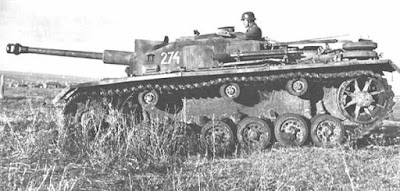Produced in large quantities (over 49.000) the M4 Sherman tank formed the main tank force of US Army during World War II.
This tank development had started in 1940 as a replacement for the M3 Lee, the first M4 featured a cast hull and turret, housing a 75 mm M3 L/40 gun, two Browning M1919 .30 (7.62 mm) and one Browning M2HB .50 (12.7 mm) were used in the role of anti-personnel and anti-material. Late versions were upgraded to the 76 mm M1 high velocity gun.
 Powered by a 400 hp Continental R975-C4 9 cylinders radial engine, with this engine the M4 could reach a top speed up to 48 kmh. The crew consists of 5 men (driver, aux.driver, gunner, loader and commander), protection was provided by a 76 mm thick sloped armor at the front of the tank which late ineffective against the German 75 mm and 88 mm.
Powered by a 400 hp Continental R975-C4 9 cylinders radial engine, with this engine the M4 could reach a top speed up to 48 kmh. The crew consists of 5 men (driver, aux.driver, gunner, loader and commander), protection was provided by a 76 mm thick sloped armor at the front of the tank which late ineffective against the German 75 mm and 88 mm.Despite the high losses in battle, the Sherman outnumbered any German, Italian of Japanese tank in the war and managed to be used long after the conflict by USA and its allies until the late 60s.





















